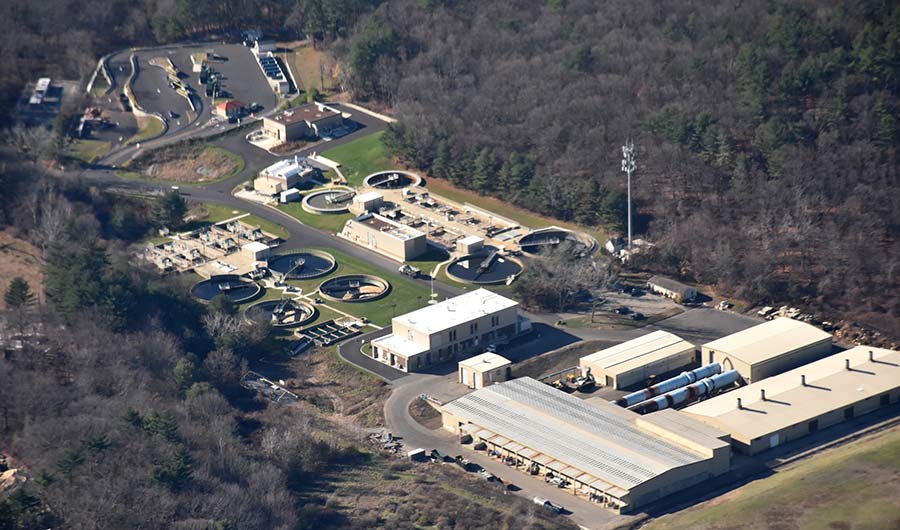Taking Other People’s Medicine in a Glass of Water
(Inside Science) -- Almost every chemical we create to use in modern pharmaceuticals, personal products or household goods eventually has to go somewhere.
We spit toothpaste into the sink. We wash shampoo and soap down the drain. What drugs we don’t absorb, digest or metabolize we excrete and flush down the toilet. What cleaning products are not evaporated or absorbed on our floors or countertops get poured out. Sooner or later all these chemicals end up back in the ground or our drinking water.
Drugs in the water supply have been a subject of scientific concern for more than a decade. Even modern water treatment plants, most based on designs originating before the threat was known, simply can’t handle them.
Well-known contaminants from household products like PCBs are monitored but pharmaceuticals and substances such as shampoos or toothpaste mostly are not. Until about 15 years ago, hardly anyone bothered to look.
So people end up ingesting other people’s medicines. Since what might harm a human may not harm a fish and the reverse is true, no one is sure how harmful this is to humans at the minute levels they are detected in the water, but some animals pay a heavy price.
There also is some fear antibiotics leaking into the water supply help create bacteria resistant to antibiotics.
Canadian researchers at McMaster University in Hamilton, Ontario, have found that little sunfish in ponds downstream from a modern water treatment plant spend a third more energy just to combat the effects of the chemicals that escape purification. They will, for example, grow larger gills to absorb more oxygen to support the resulting higher rate of metabolism.
They die young.
The scientists placed three bluegill sunfish from Opinicon Lake in eastern Ontario in three cages. Two of the cages were exposed to effluent from the Dundas Water Treatment Plant, one at 54 yards and another at 907. The third cage was placed in a nearby swamp that did not get water from the plant.
The treatment plant, a modern facility that uses three major stages of treatment, had an outflow of just under 4 million gallons of wastewater a day.
The scientists took measurements of the contamination (a category called Pharmaceuticals and Personal Care Products, or PPCP) in the waters in the lake and found very little.
But the researchers found 16 PPCPs in the water near the effluent, including a range of antibiotics, antidepressants, beta-blockers and hormone medications. They also found caffeine and artificial sweeteners.
They then measured the changes in metabolism of the fish in each, and found the fish downstream from the plant were expending a third more energy to counter the effects of the contaminants.
The fish closest to the plant had 36 percent higher metabolism to cope with the contaminants; the fish further away, 30 percent.
They did not try to find which contaminants were causing which problems for the fish but were looking at the cumulative effect of the substances, said Graham R. Scott, an assistant professor of biology at McMaster.
“We don’t know exactly what is leading to which effects on the fish,” he said.
Their work was reported in December in the journal Environmental Science & Technology.
Such pollution is widespread. A survey by the Associated Press in 2008 found the contaminants in the drinking water of 24 major metropolitan areas, from California to New Jersey.
The reporters found 56 pharmaceuticals in Philadelphia’s drinking water, including medicine for pain, infections, high cholesterol, asthma, epilepsy, mental illness and heart disease. They also found anti-epileptic drugs and anti-anxiety drugs in Southern California's water supply, sex hormones in San Francisco’s and antibiotics in Phoenix's.
The federal government does not routinely test for this kind of contamination.
“It’s not that the plants are out of compliance,” said Dana Kolpin, a research hydrologist at the U.S. Geological Survey in Iowa City, Iowa. They were designed before the problem was discovered.
Current purifying technology does not remove them. “There are a whole range of things that are not being regulated,” he said.
“It’s a complex soup of things we are trying to untangle,” he said.
The Dundas plant used conventional technology, Scott said, and the technology exists to eliminate most of these substances but building new plants or updating current plants to do so would be very expensive.
“Even the most sophisticated treatment doesn’t find things,” Kolpin said. But building new plants comes a price. There is an energy footprint as well.
The best way of mitigating the damage, Kolpin said, is to identify which of the PPCP are harmful and try to filter those.


